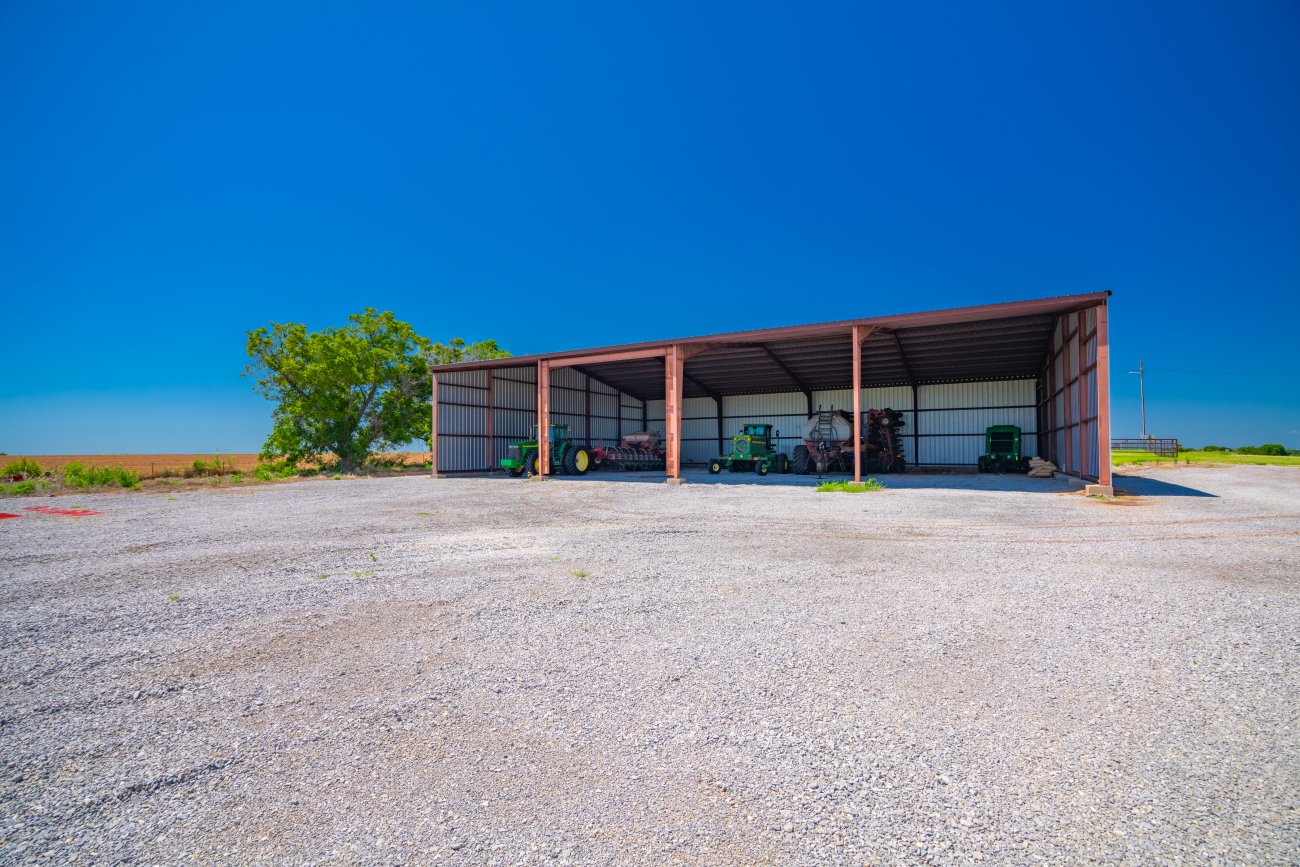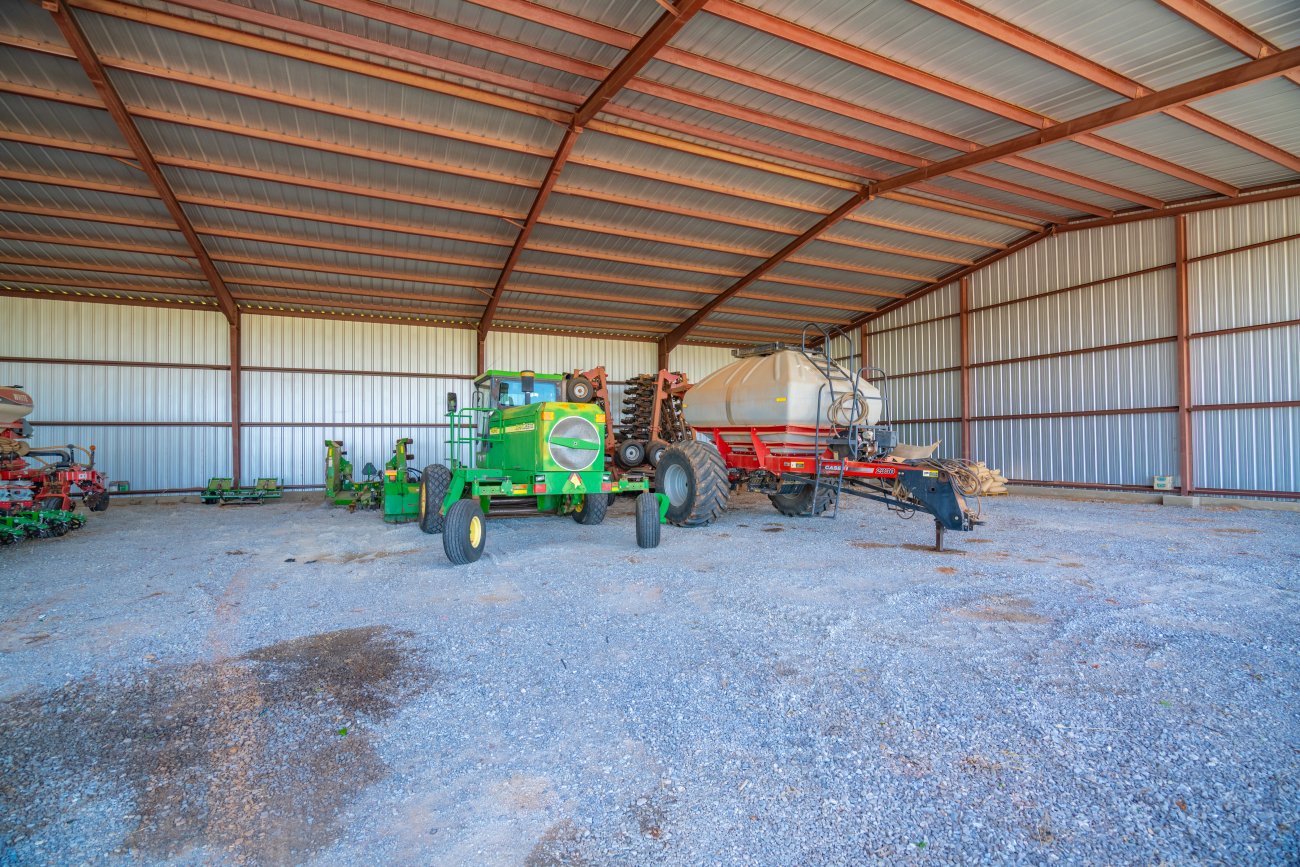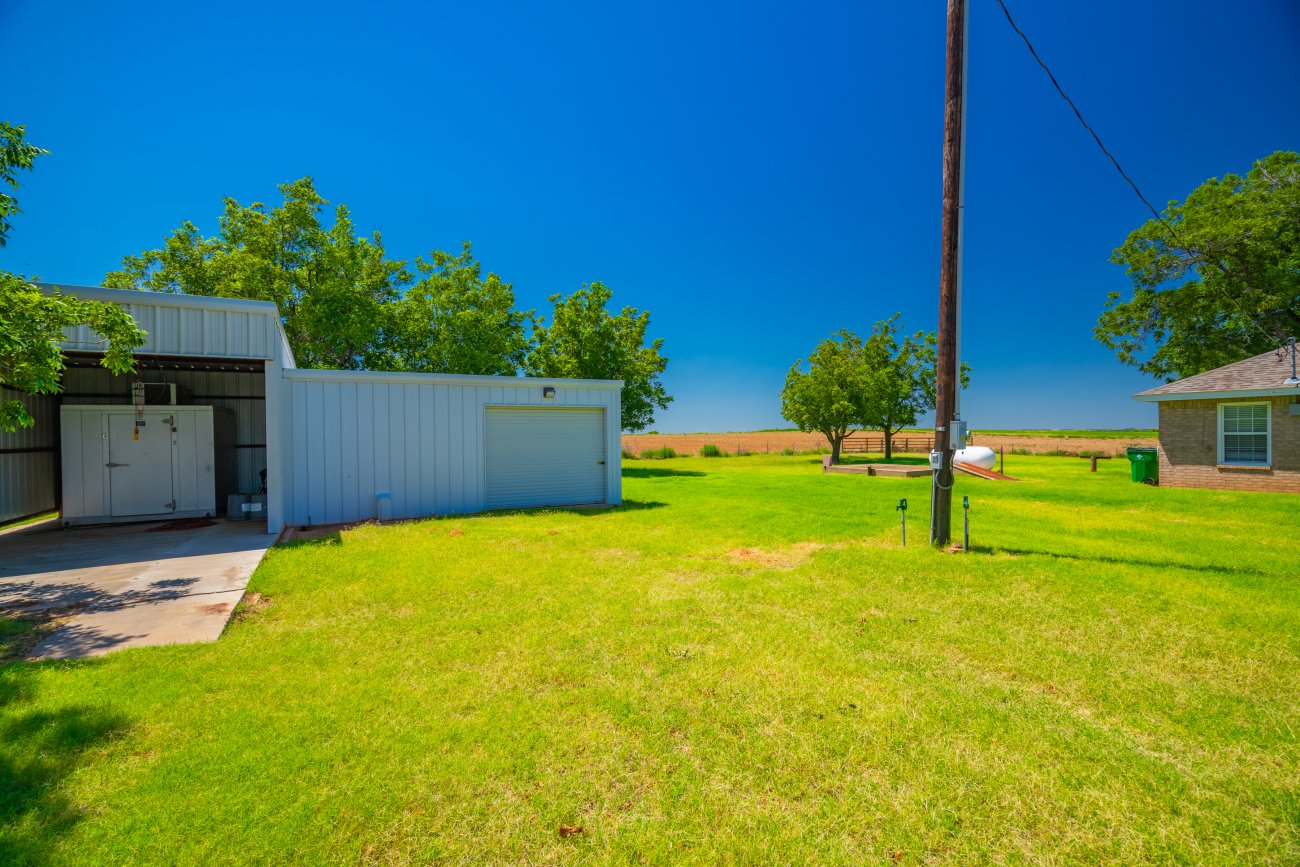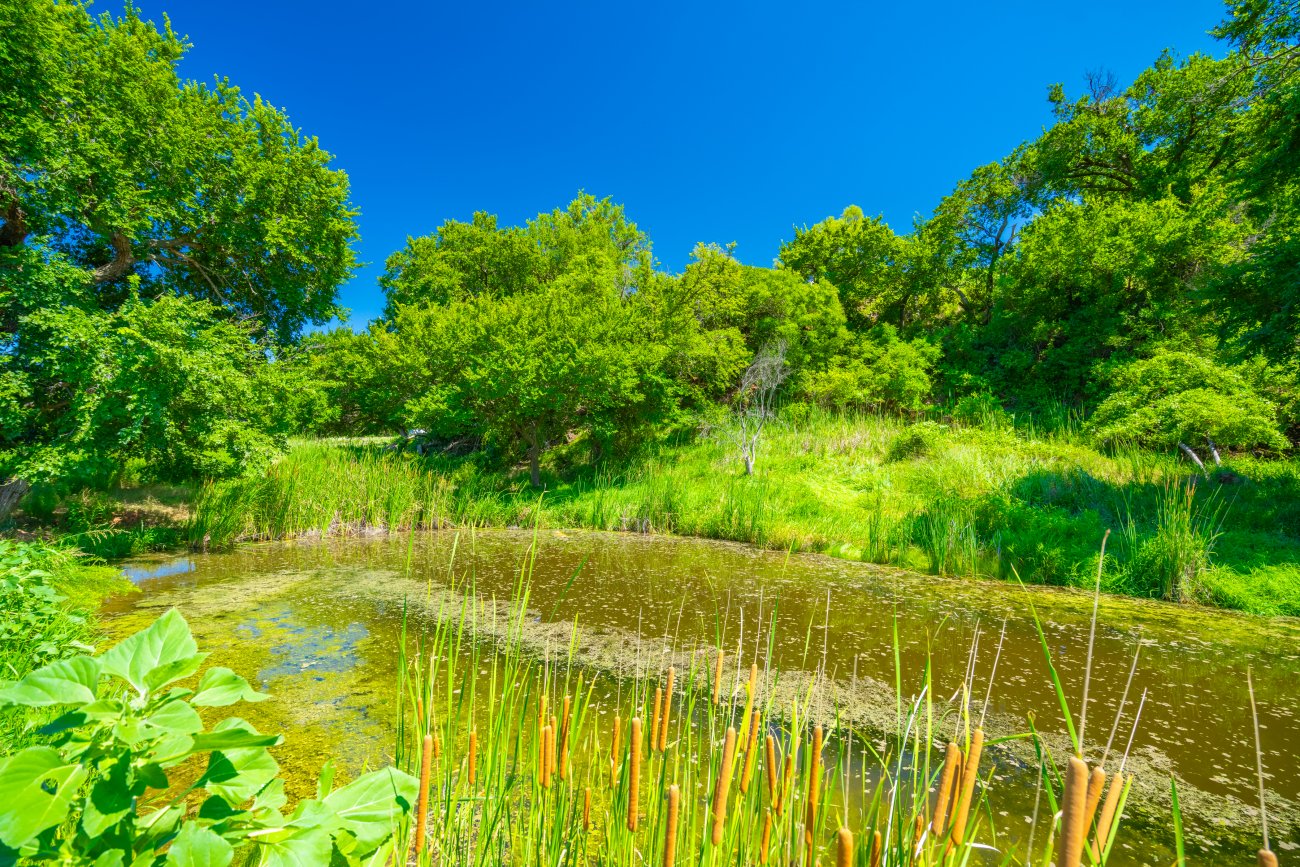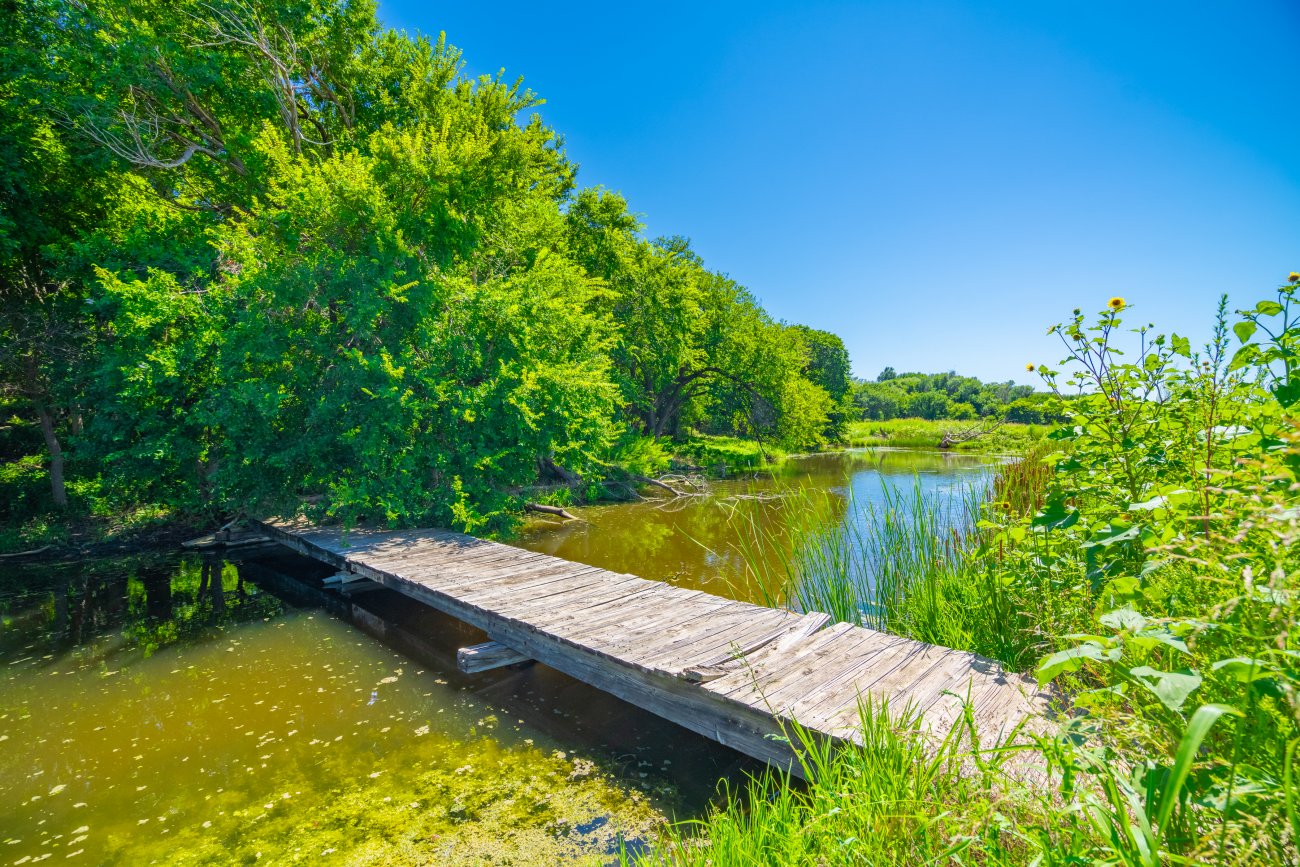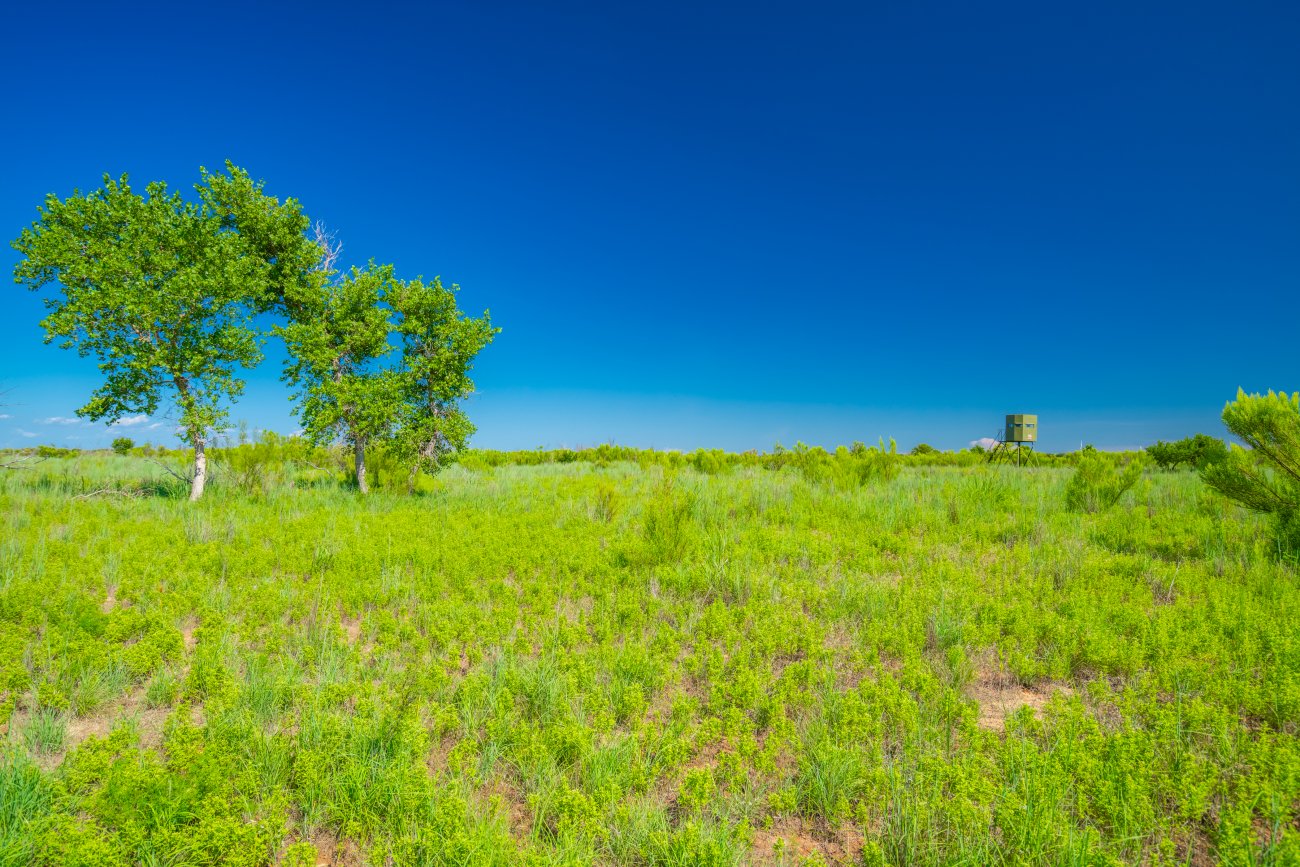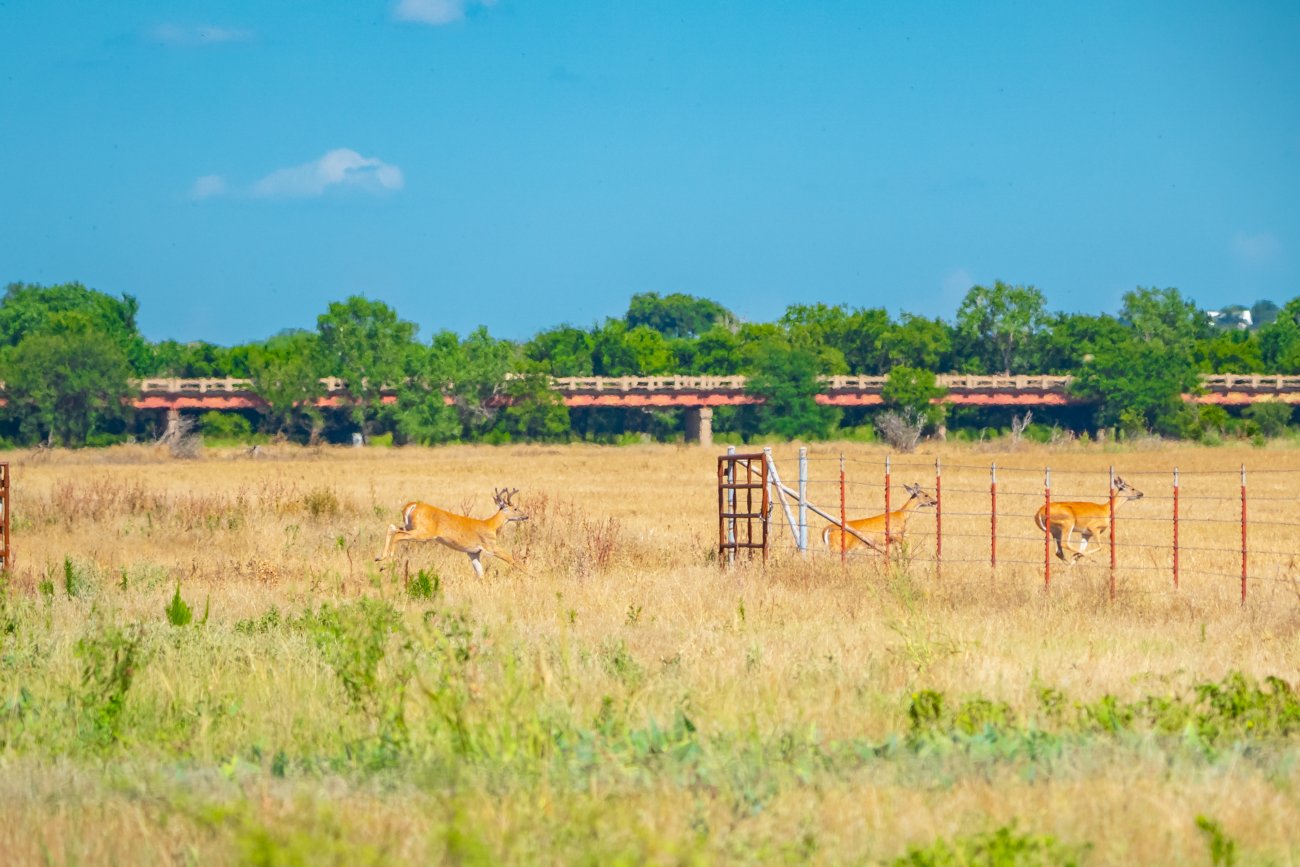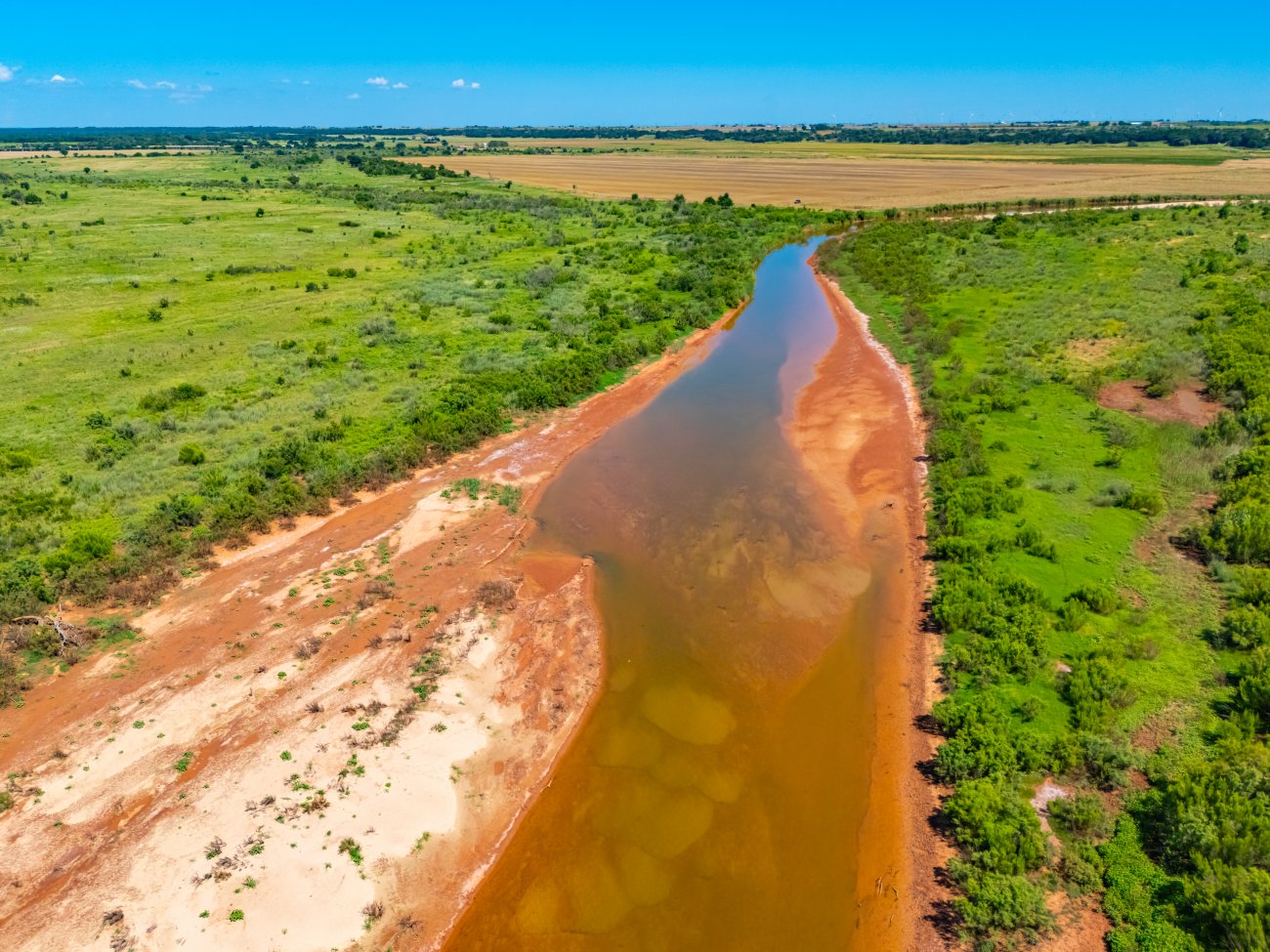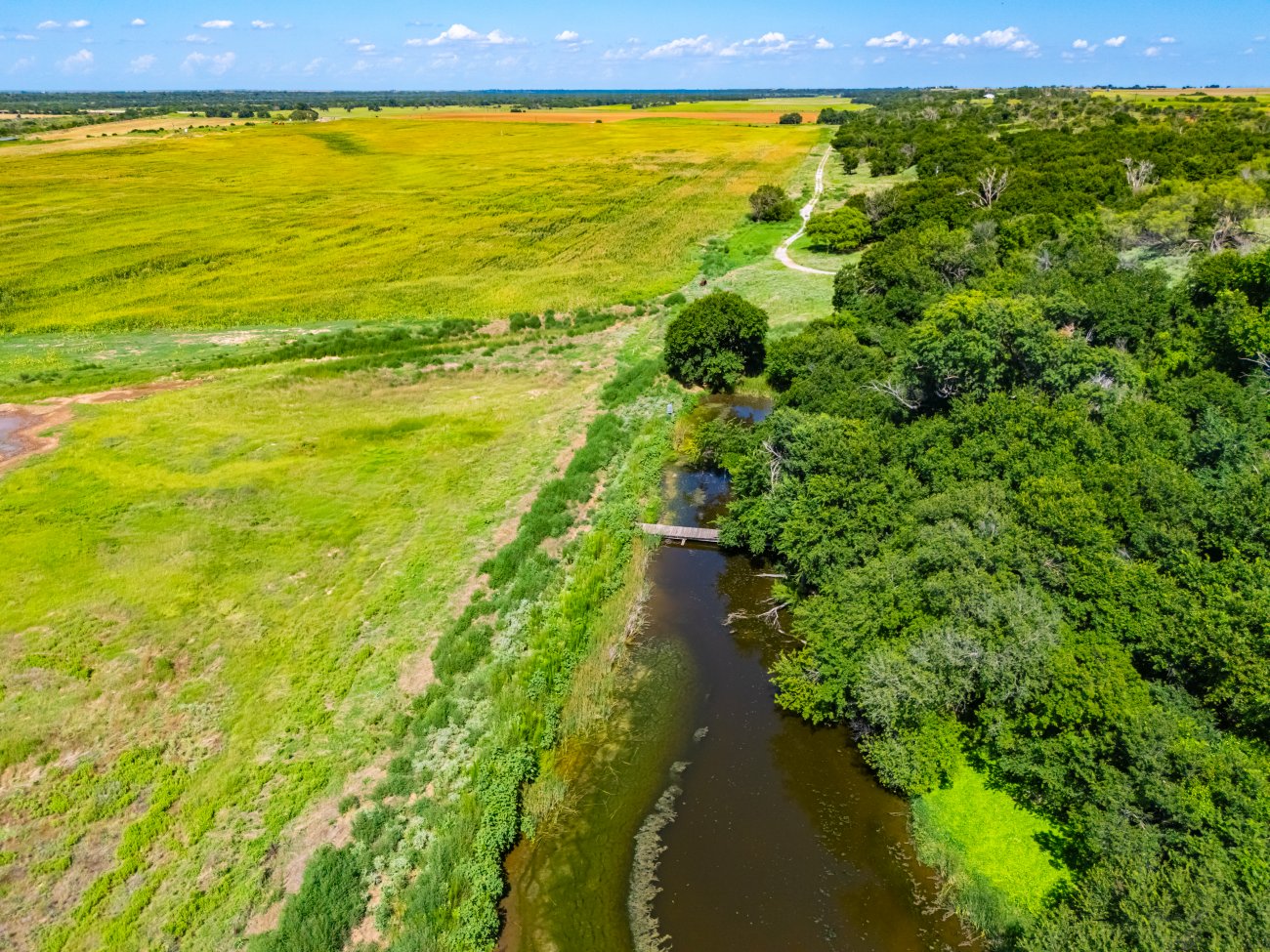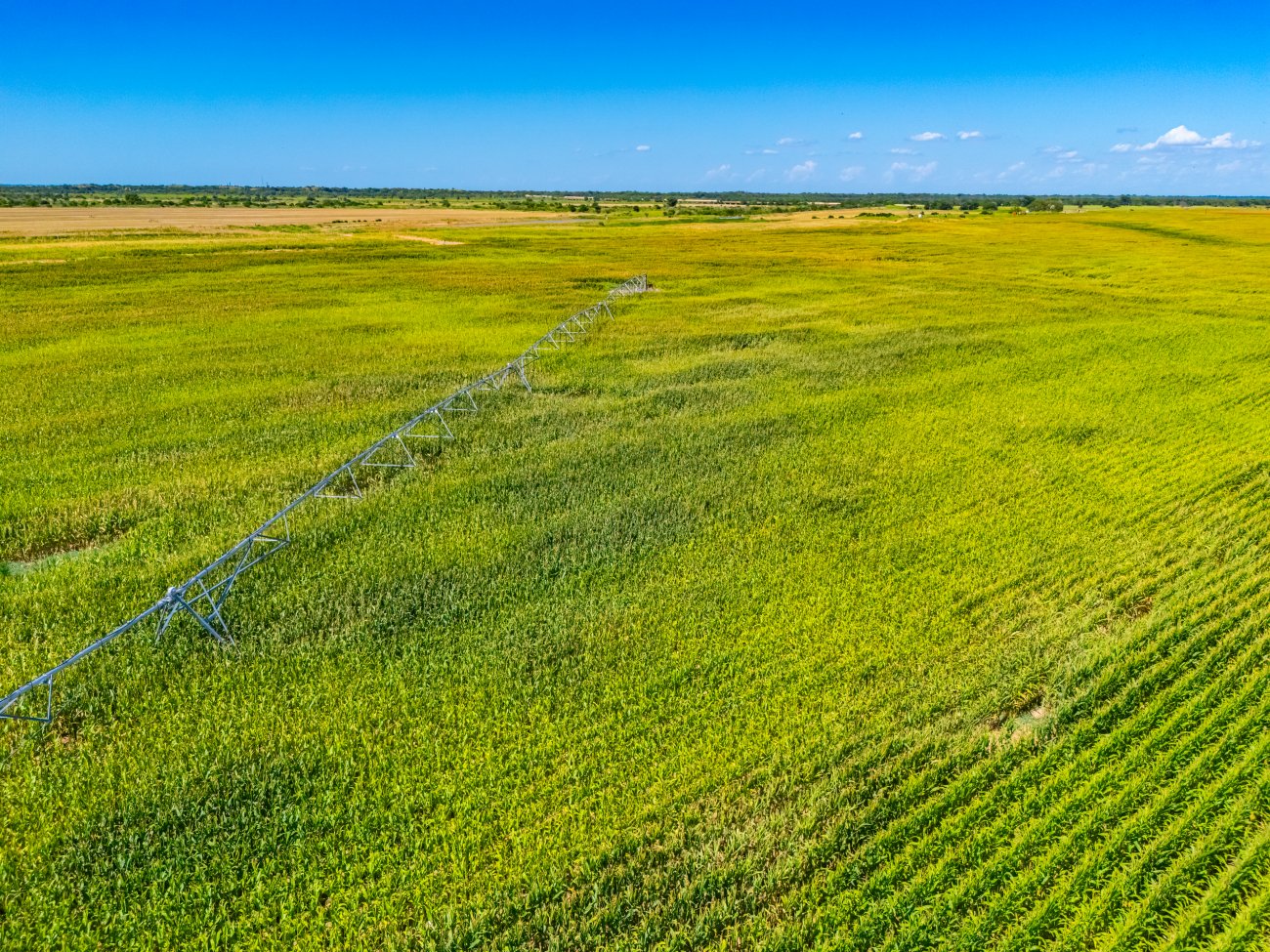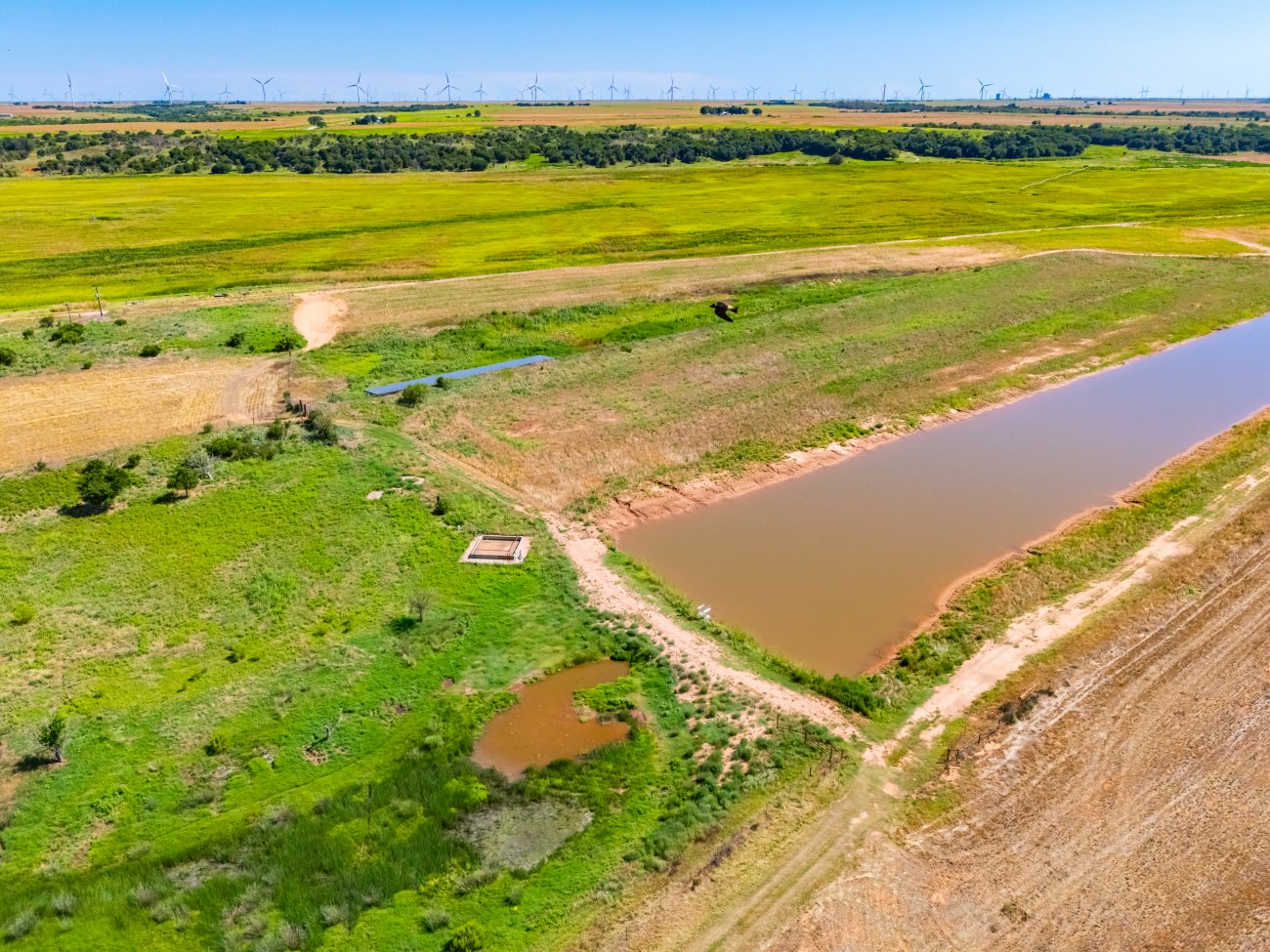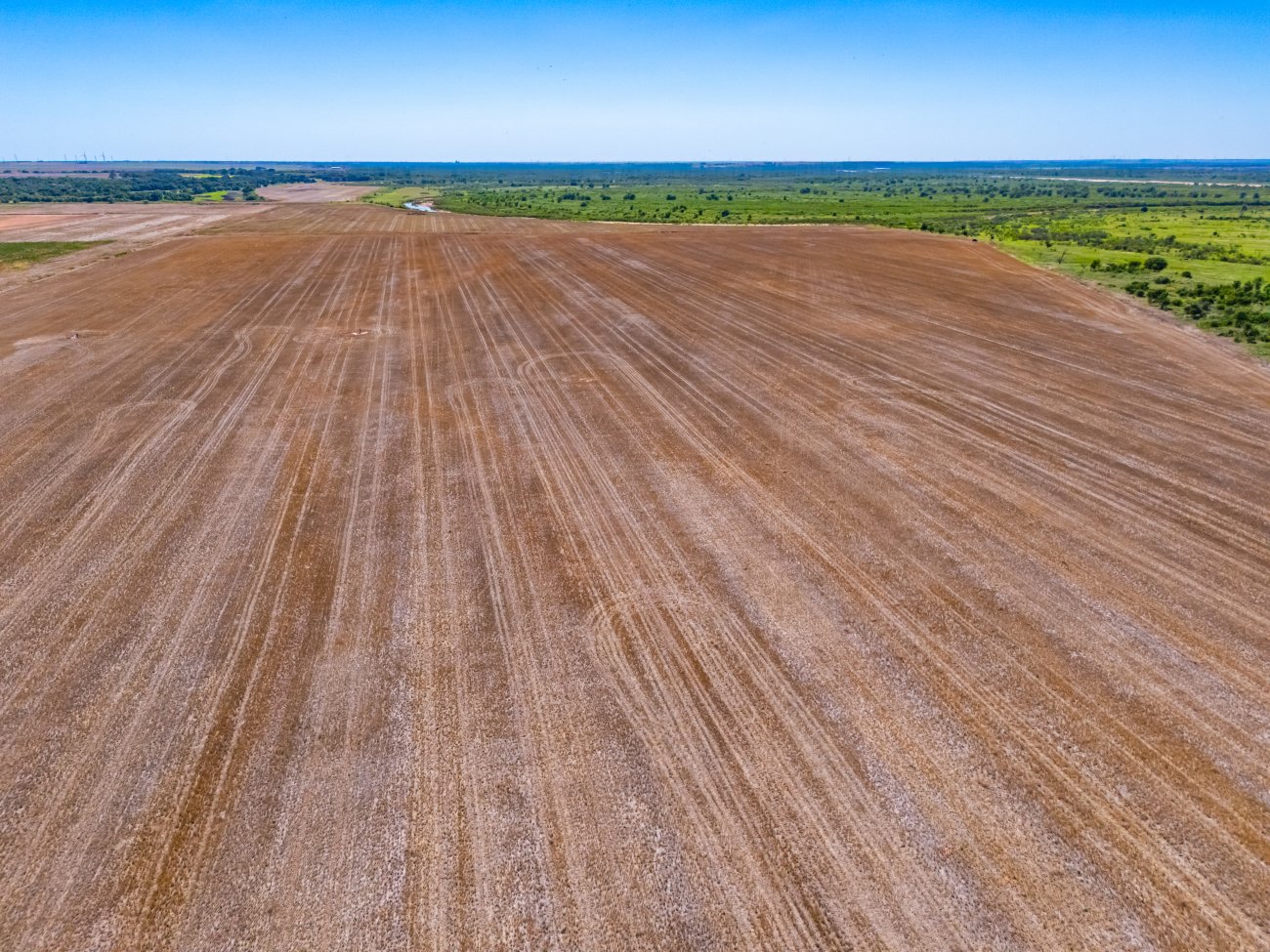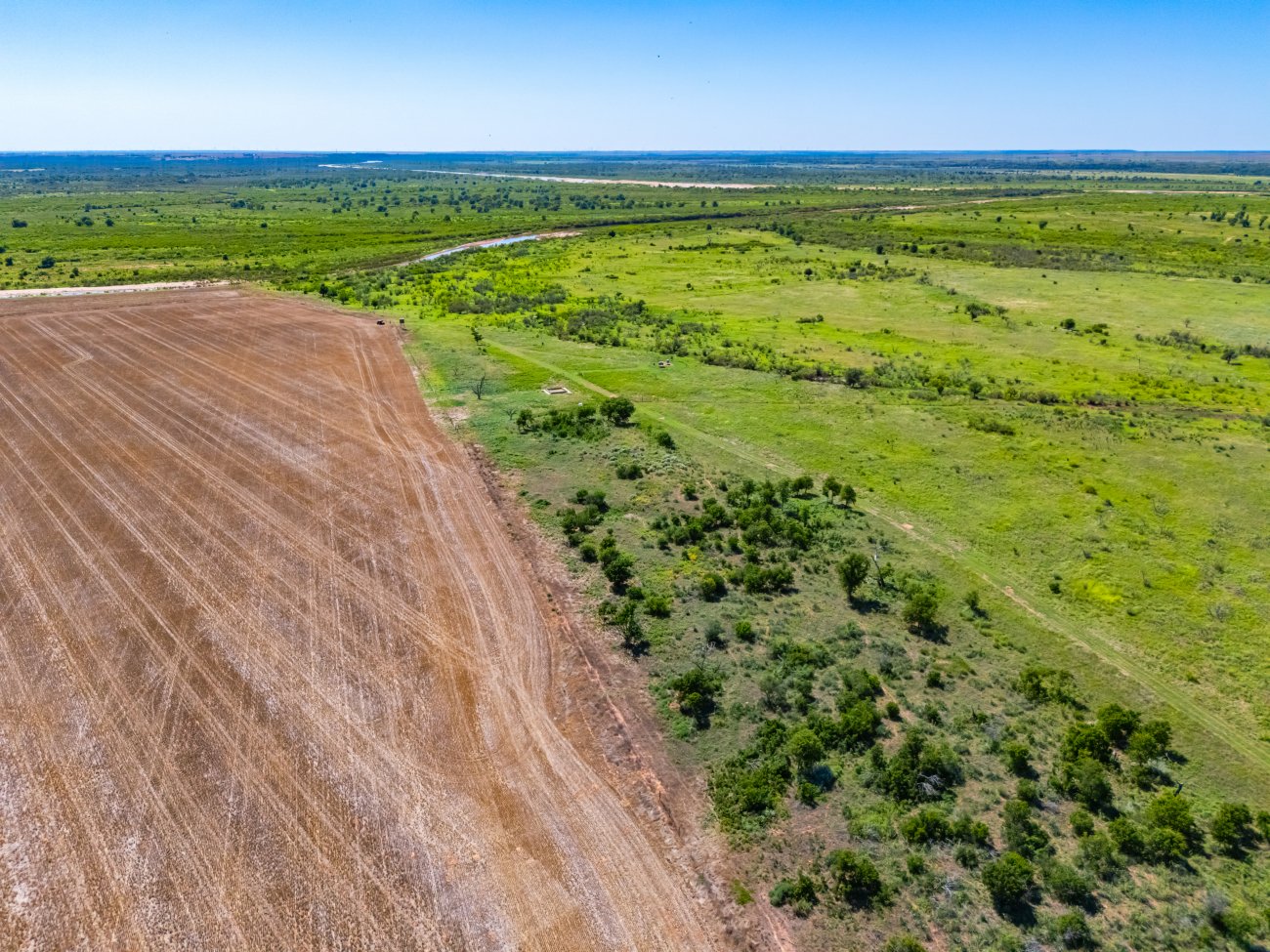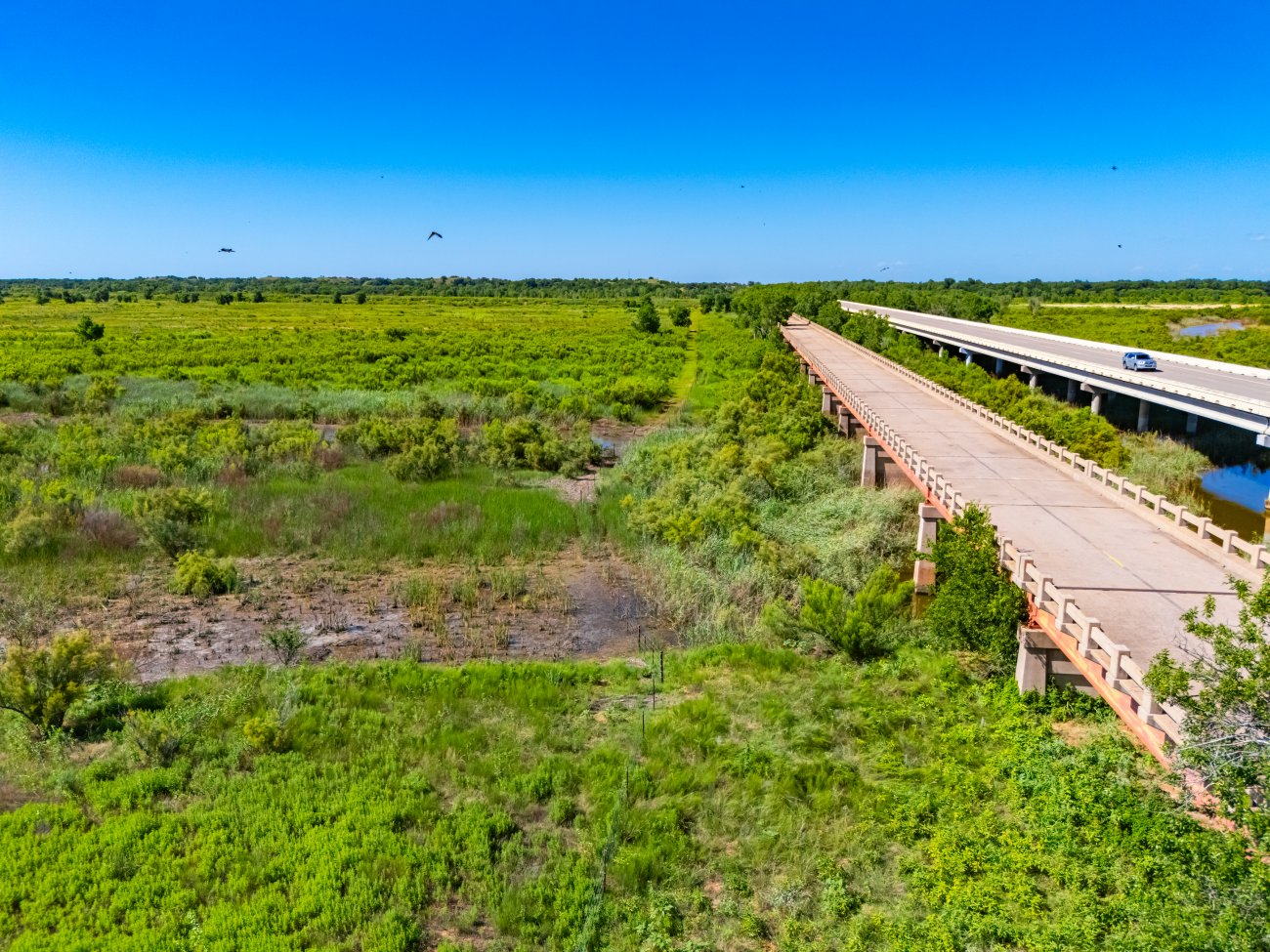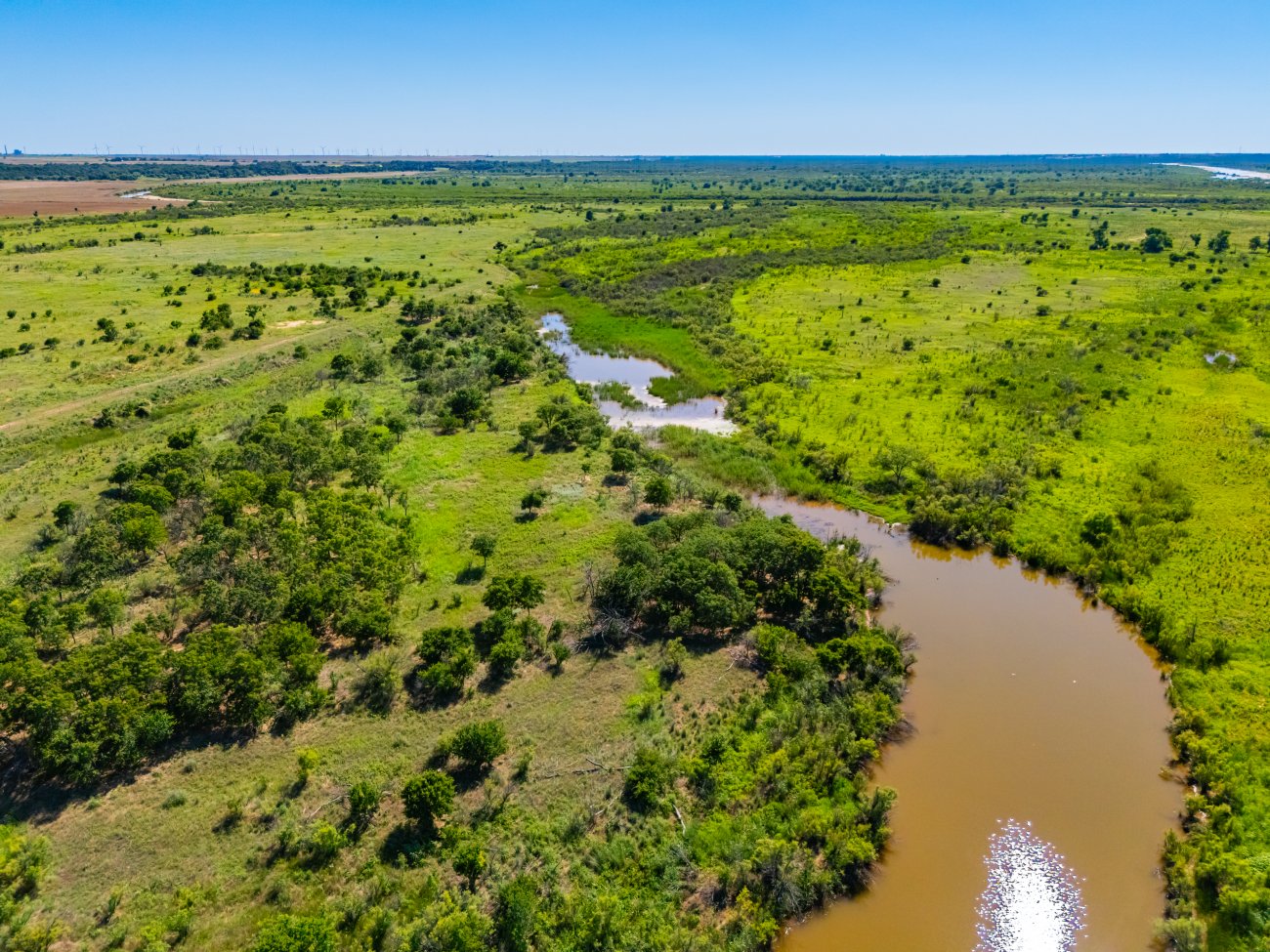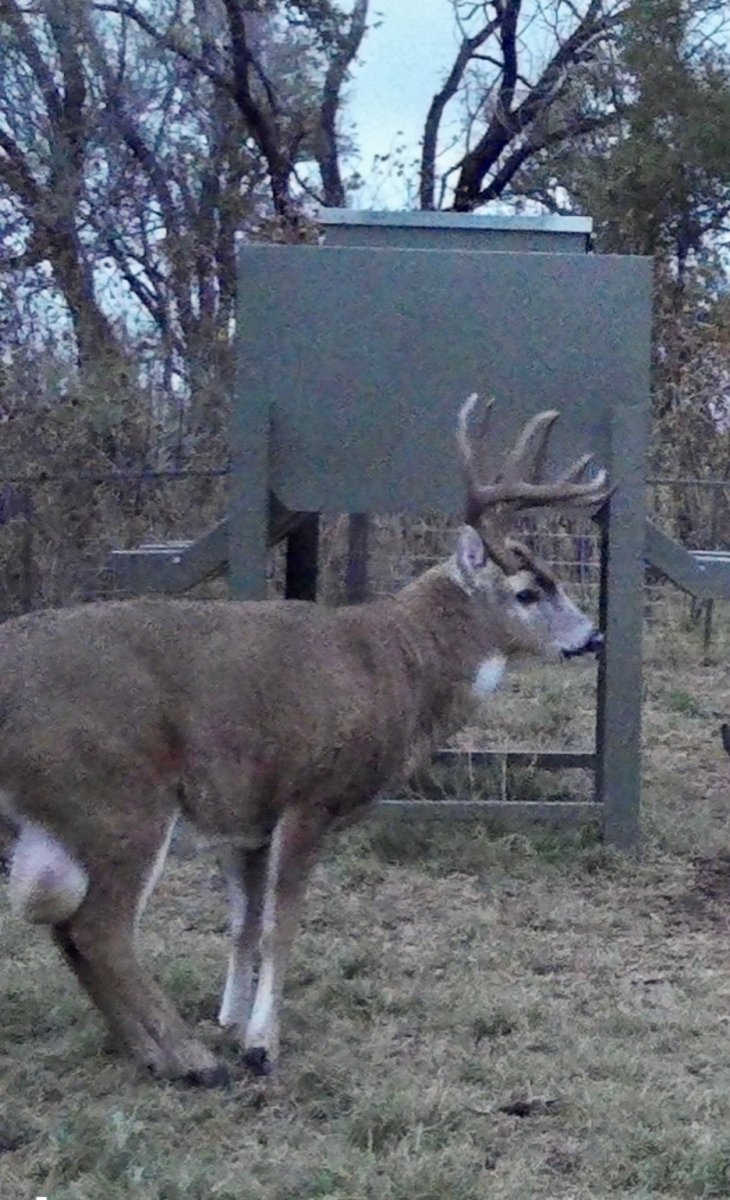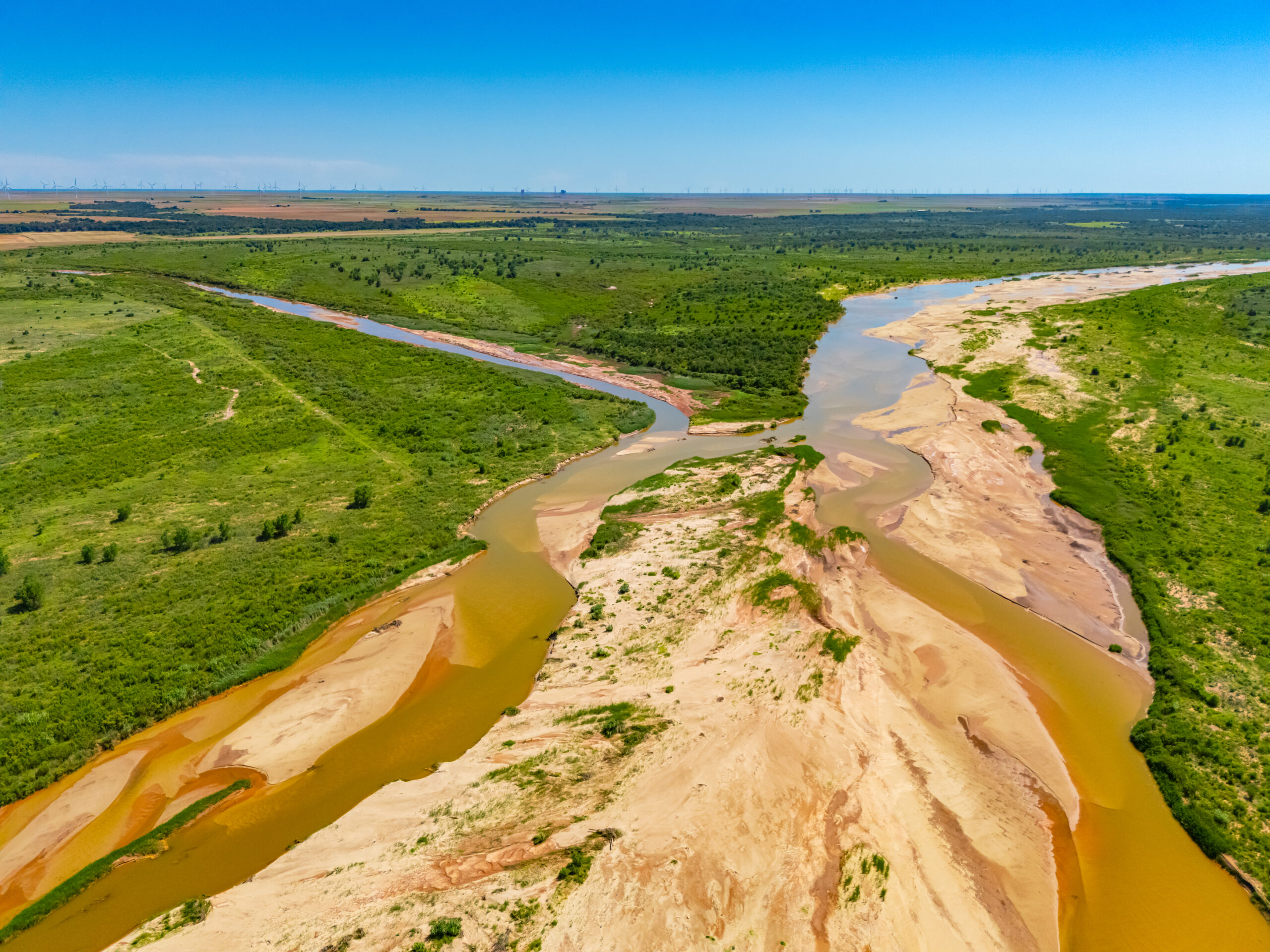 Dos Rios Ranch - Wilbarger County, Vernon, TX
Dos Rios Ranch - Wilbarger County, Vernon, TX 
Dos Rios Ranch - Wilbarger County, Vernon, TX
Live water is a key feature of the 1787 +/- acre Dos Rios Ranch, as it is situated uniquely at the confluence of the Red and Pease Rivers, with over five miles of river frontage. This diverse property boasts excellent agricultural resources for livestock and farming, as well as opportunities for recreational hunting of waterfowl, deer, turkey, dove, and quail.
Location
The Dos Rios Ranch is conveniently located just 163 miles from the DFW Metroplex, 175 miles from Amarillo, Texas, and 160 miles from Oklahoma City, in Northeast Wilbarger County near Vernon, Texas. It has easy access off both Highway 70 and FM 1763, 5 miles north of Highway 287. The Wilbarger County Airport (WIB) is a short 15 minute drive, as is the Frederick Regional Airport (FDR).
Topography, Rangeland & Habitat
There is approximately 100 feet of elevation change from the south end of the property (1210 feet) to the Red River at the north side (1114 feet). In addition to the agriculture fields, much of the north pasture vegetation consists of native switchgrass, little bluestem, and silver blue stem, as well as plum thickets and other brush that scatter the river bottom. Here, the dense brush provides cover for deer and roosts for turkey in the form of chinaberry groves, hackberry, cottonwood, elm, mesquite, and a few large cedars. The bluff, which runs east to west, is heavily covered with elm trees, providing shade and refuge for wildlife. There are also several springs along this bluff.
A detailed soil map is available upon request.
Wildlife
The Dos Rios Ranch is a haven for wildlife, which includes whitetail deer (160 class deer have been harvested in recent years) and gobbling springtime turkeys. This area of the rolling plains has historically produced top-end deer. Wilbarger County claimed the number one Texas typical P&Y deer for many years. Across the Red River in Tillman County, Oklahoma, the state record non-typical was harvested, scoring 248 B&C. Habitat Land Services Company has professionally developed a wildlife management plan specifically for the Dos Rios Ranch, which is being implemented by the current ownership. An emphasis has been placed on waterfowl resource management and development, resulting in thoughtfully designed waterfowl tanks that utilize South Texas brand aluminum flash board risers. This design featuring risers allows water to be removed during the warmer growing season, which helps the barnyard grass, Japanese millet, and other moist soil vegetation to thrive, providing feed to the waterfowl in the cooler months when water is put back on the impoundments.
Several planted fields attract a diverse array of wildlife, including deer, sandhill cranes, geese, quail and dove.
Agriculture
At the heart of the farming operation are two single-pivot irrigation systems covering approximately 100 acres, with plans to add two additional pivots where two existing well heads are located, resulting in approximately 200 acres under pivot irrigation. Much of this area is planted in corn. There are approximately 150 acres in non-irrigated farmland. Additionally, there are 250 acres of a cover crop field planted with a variety of winter and cool-season mixtures, including wheat, triticale, rye, turnips, and radishes. In the summer and warm season, these fields are planted with a cover crop mixture of milo, millet, sunflowers, and peas. A coastal field on the south side of the ranch has been converted to a mix of native grasses. One coastal field remains on the south side of the property.
Improvements
As a foundation for the deer hunting program, there are 10 HB Hunting Products tower stands, each with 1,000 lb corn feeders, 2,000 lb protein feeders, and cottonseed feeders. The feed stations are encircled with feed pen panels to deter feral hog activity. Additionally, 5 Quail Guard feeders are strategically placed to disperse medicated quail feed. To assist in the feeding program are two (20-ton and 10-ton) overhead feed bins. Near the feed bins on an all-weather road is a nice set of working pens, complete with a squeeze chute and a barn. For the shooting sports enthusiast, there is a rifle range.
There is a newly remodeled 2-bedroom, 2-bath brick masonry home with a kitchen, living room, and laundry room. Adjacent to this home are three recently updated outbuildings:
- 900 +/- sf metal building with concrete floors, and power provides an ideal space for game processing and storage.
- 1,800+/- sf metal storage building shop with concrete floors and power, providing ample storage space.
- 8,400 +/- sf newly constructed metal tractor and equipment storage barn with dirt floors
The current owners have gone above and beyond to maintain and enhance the land’s beauty. The fencing is in excellent condition, including new fencing along the river with a 100-foot buffer setback, which helps resist high water events.
Water
“I wanted water, and they got me oil. I was mad, mad clean through. I said, ‘Damn the oil. I want water.” – W.T. Waggoner, Vernon, Texas, 1903.
Pappy Waggoner would have been tickled pink to run a drilling rig at the Dos Rios Ranch, as ground water is plentiful and his white face cattle would have loved the opportunity to drink water out of one of the seven 20×20 concrete tanks, ideally situated to provide the precious water resource to livestock and wildlife alike.
Notably, the Dos Rios Ranch boasts 3.4 miles of frontage on the Pease River and 1.7 miles of frontage on the Red River, offering a fertile river bottom habitat. There are approximately 15 water wells, each 6 inches in diameter, with an average depth of 25 feet and a flow rate of 40-70 gallons per minute. Four of these wells are domestic wells that provide water to the house and the seven concrete livestock troughs. The remaining wells are used for irrigation.
There are approximately five earthen tanks and natural sloughs, primarily managed for waterfowl, and two (House and Middle tanks) have aluminum water control structures with walk-on grates.
Electricity
Minerals
Area History
Located not far upstream on the Pease River is the site where, on December 19, 1860, Cynthia Ann Parker, the mother of Quanah Parker, was captured from her Indian culture that she had grown to love during the Battle of Pease River. To the North of the Dos Rios Ranch are the Wichita Mountains in Oklahoma, where Quanah Parker eventually made a new home for his Comanche tribe as their last free chief.
The Dos Rios Ranch is located near the historic Doan’s Crossing Store on the Red River, where provisions were provided to cowboys driving their herds north on the Great Western Cattle Trail. From 1879 to 1895, six million head of cattle crossed there.



















